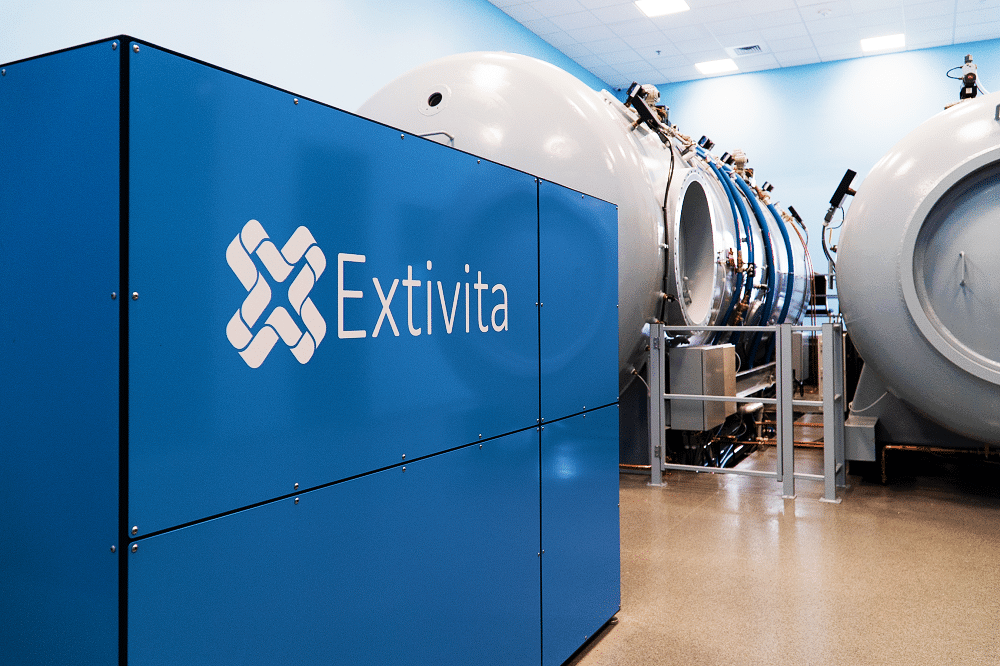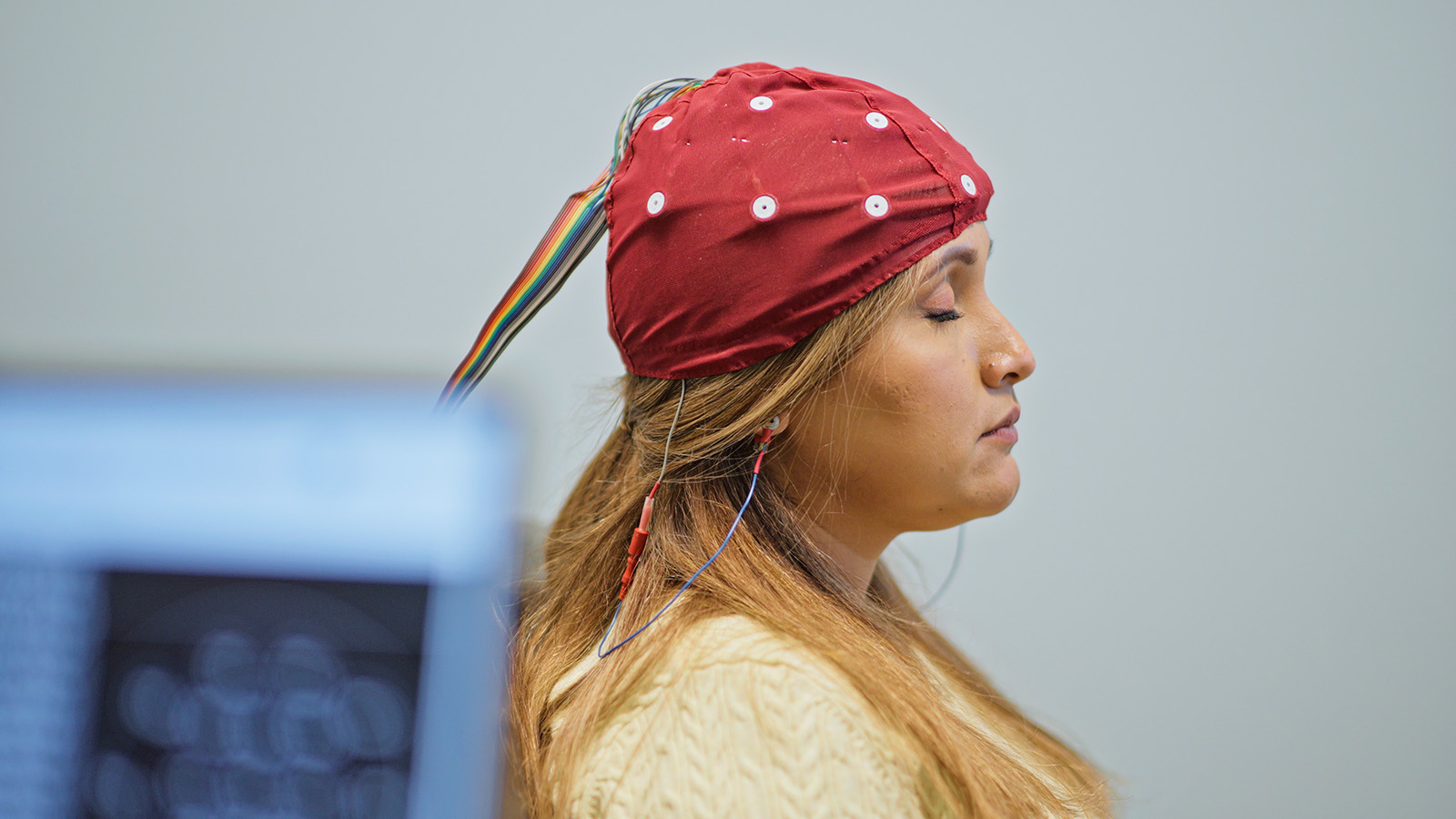Sleep Disorders
Sleep is essential for good health because it gives the body and brain time to rest, repair, and recharge. While we sleep, the brain processes memories, clears out harmful waste, and supports learning. At the same time, the body heals itself, strengthens the immune system, and balances important hormones that regulate stress and energy. Poor sleep can lead to serious health problems like heart disease, diabetes, weight gain, and anxiety or depression. Getting 7–9 hours of quality sleep each night improves our focus, mood, and overall well-being, making it a key part of a healthy lifestyle. (1-2)
Hyperbaric Oxygen Therapy for Sleep Disorders

Hyperbaric Oxygen Therapy (HBOT) can improve sleep by reducing inflammation, which is a common cause of disrupted sleep. It lowers the levels of inflammatory substances in the body, like IL-6, that interfere with deep, restful sleep and can cause stress hormones like cortisol to rise. HBOT also reduces oxidative stress, helps repair brain areas that control sleep, and brings the body back into balance. By addressing these issues, HBOT supports better sleep and helps restore a healthy sleep cycle. (3-5)
IV Therapy for Sleep Disorders
IV therapies such as Myers’ Cocktail, Glutathione, and NAD+ infusions can improve sleep by addressing underlying factors that disrupt sleep, such as nutrient deficiencies, oxidative stress, and cellular dysfunction. These therapies help lower stress hormones and inflammatory markers, creating an environment conducive to restful sleep, while providing essential nutrients and antioxidants to support the body’s repair processes during sleep. Additionally, they promote the production and regulation of neurotransmitters and hormones involved in sleep, such as serotonin and melatonin. By delivering these key nutrients and compounds directly into the bloodstream, IV therapies offer faster and more effective results compared to oral supplementation. For individuals with sleep issues related to inflammation, stress, or deficiencies, these infusions can be a valuable component of a sleep improvement plan. (6-11)

Myers’ Cocktail
A blend of vitamins and minerals, including magnesium, calcium, B vitamins, and vitamin C, Myers’ Cocktail can improve sleep quality by:
- Magnesium: Known as the “relaxation mineral,” magnesium helps calm the nervous system, reduce stress, and promote deep, restorative sleep by regulating neurotransmitters like GABA.
- B Vitamins: Essential for energy metabolism and neurotransmitter function, B vitamins like B6 support serotonin production, which is a precursor to melatonin, the sleep-regulating hormone.
- Vitamin C: Reduces inflammation and oxidative stress, both of which can impair sleep.
Glutathione
A powerful antioxidant, Glutathione can enhance sleep by:
- Reducing Oxidative Stress: Poor sleep often results from inflammation and oxidative damage in the brain and body. Glutathione neutralizes free radicals, protecting cells and improving recovery.
- Supporting Detoxification: Sleep is a key time for detoxification. Glutathione enhances liver function, aiding the removal of toxins that could disrupt sleep cycles.
- Regulating Inflammation: By reducing pro-inflammatory cytokines like IL-6, Glutathione may help improve sleep patterns.
NAD+ Infusions
Nicotinamide adenine dinucleotide (NAD+) is critical for cellular energy production and repair. It may improve sleep by:
- Boosting Mitochondrial Function: NAD+ supports energy metabolism, helping cells recover during sleep and promoting overall sleep quality.
- Balancing Circadian Rhythms: NAD+ is involved in regulating the body’s internal clock and enhancing the function of sirtuins, proteins that maintain circadian balance.
- Improving Neurological Health: NAD+ repairs DNA damage and reduces neuroinflammation, supporting brain function and stress management, which are crucial for restful sleep.

Pulsed Electromagnetic Field Therapy (PEMF) for Sleep
Pulsed Electromagnetic Field (PEMF) therapy can improve sleep by reducing inflammation, calming the nervous system, and supporting cellular repair. It helps lower stress hormones like cortisol and promotes relaxation by activating the parasympathetic nervous system. PEMF also enhances mitochondrial function, increasing energy production and aiding in tissue recovery, which are vital during sleep. Additionally, it can regulate brainwave activity, encouraging alpha and theta waves for deeper sleep, and improve blood circulation to support oxygen delivery to tissues. By addressing underlying issues such as chronic pain, stress, and disrupted circadian rhythms, PEMF therapy promotes better overall sleep quality. (12-15)
Neurofeedback for Sleep Disorders
Neurofeedback, a form of biofeedback targeting brainwave activity, can improve sleep by training the brain to achieve healthier patterns of neural activity. It works by monitoring brainwaves in real-time and providing feedback to encourage states associated with relaxation, such as increased alpha or theta waves and reduced high beta waves linked to stress and hyperarousal. Neurofeedback helps regulate the brain’s ability to transition between alertness and rest, promoting deeper, more restorative sleep. It is particularly beneficial for individuals with insomnia, anxiety, or stress-related sleep disturbances, as it calms overactive areas of the brain and enhances overall sleep quality. (16-19)

References
- National Sleep Foundation. “Why Do We Need Sleep?” SleepFoundation.org, National Sleep Foundation, https://www.sleepfoundation.org/how-sleep-works/why-do-we-need-sleep. Accessed 16 Jan. 2025.
- Xie, Lulu, et al. “Sleep Drives Metabolite Clearance from the Adult Brain.” Science, vol. 342, no. 6156, 2013, pp. 373–377. Nature Reviews Neuroscience, https://www.nature.com/articles/nrn3245. Accessed 16 Jan. 2025.
- Gill, Alfred L., and Christopher N. Bell. “Hyperbaric oxygen: Its uses, mechanisms of action, and outcomes.” QJM: An International Journal of Medicine, vol. 97, no. 7, 2004, pp. 385–395.
- Hadanny, Amir, and Shai Efrati. “The hyperoxic-hypoxic paradox.” Biomolecules, vol. 10, no. 7, 2020, article 958.
- Irwin, Michael R. “Why sleep matters to health: A psychoneuroimmunology perspective.” Annual Review of Psychology, vol. 66, 2015, pp. 143–172.
- Gaby, Alan R. “Intravenous nutrient therapy: the ‘Myers’ Cocktail.’” Alternative Medicine Review, vol. 7, no. 5, 2002, pp. 389–403.
- Cleveland Clinic. “Benefits of IV Therapy.” Cleveland Clinic, my.clevelandclinic.org.
- Pizzorno, Joseph. “Glutathione!.” Integrative Medicine: A Clinician’s Journal, vol. 12, no. 1, 2013, pp. 8–12
- Life Extension Foundation. “Role of Glutathione in Chronic Disease and Sleep.” Life Extension Foundation, lifeextension.com.
- Imai, Shin-ichiro, and Leonard Guarente. “NAD+ and sirtuins in aging and disease.” Trends in Cell Biology, vol. 24, no. 8, 2014, pp. 464–471.
- Sinclair, David A. Lifespan: Why We Age—and Why We Don’t Have To. Atria Books, 2019.
- Pawluk, William. PEMF—The Fifth Element of Health. FriesenPress, 2017.
- Rosch, Paul J., and Marko S. Markov. “Bioelectromagnetic Medicine: The Role of PEMF in Therapeutics.” Annals of the New York Academy of Sciences, vol. 1157, 2009, pp. 50–67.
- Sandyk, R. “The Effects of PEMF Therapy on Sleep Disorders and Brainwave Activity.” Alternative Therapies in Health and Medicine, vol. 12, no. 2, 2006, pp. 34–39.
- Pawluk, William. “How PEMF Therapy Improves Sleep.” com, 2020, www.drpawluk.com.
- Hammond, D. Corydon. “Neurofeedback Treatment of Insomnia.” Biofeedback, vol. 34, no. 1, 2006, pp. 14–16.
- Sterman, M. B., and Egner, Tobias. “Foundation and Practice of Neurofeedback for the Treatment of Insomnia.” Applied Psychophysiology and Biofeedback, vol. 31, no. 1, 2006, pp. 21–35.
- Walker, Mark P. “Neurofeedback as a Treatment for Sleep Disorders.” Sleep Medicine Reviews, vol. 13, no. 3, 2009, pp. 251–258.
- “How Neurofeedback Can Help with Sleep.” Neurocore Brain Performance Centers, 2020, neurocorecenters.com.
